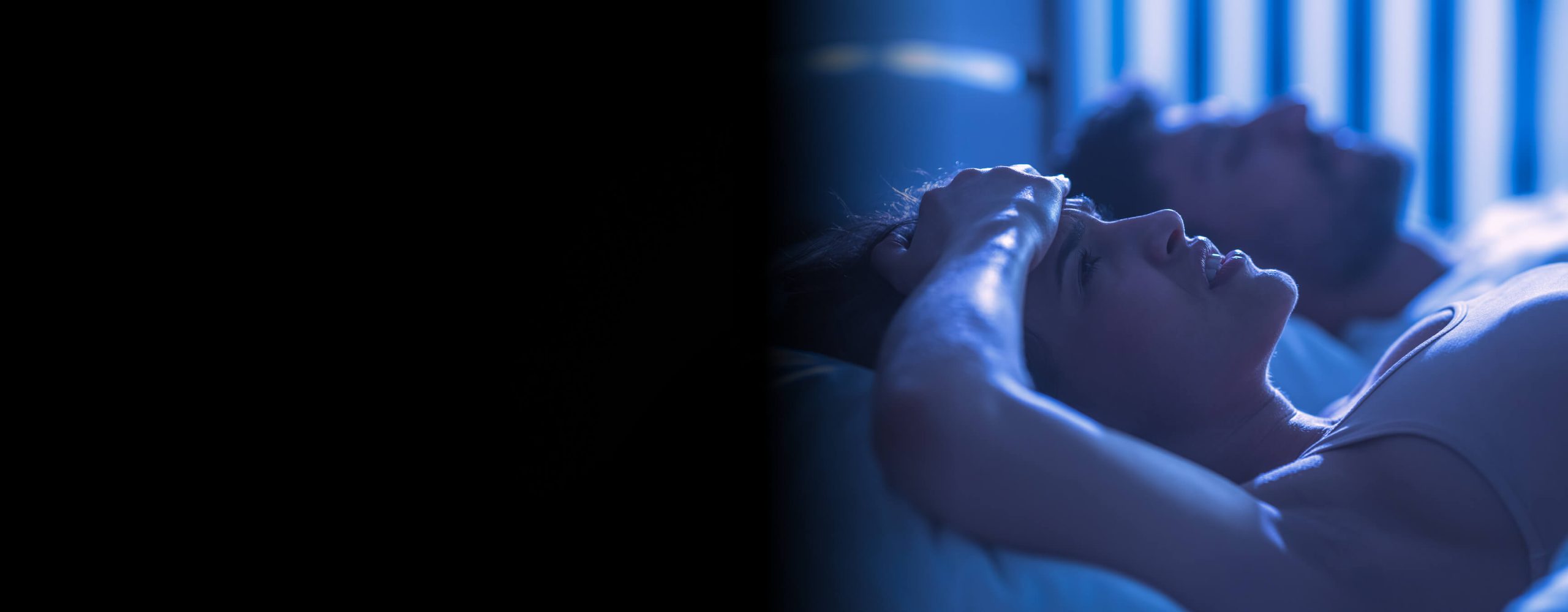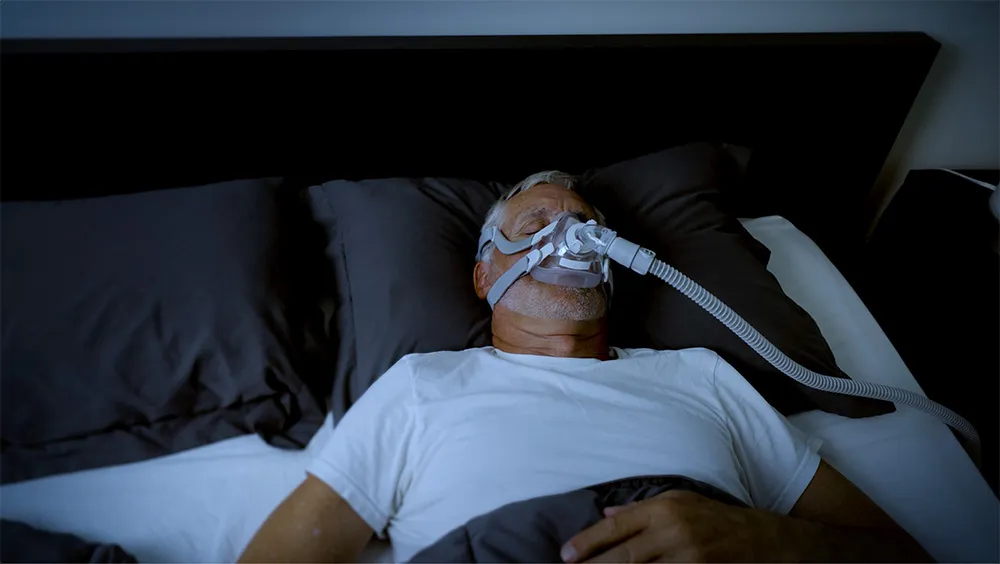What is Obstructive Sleep Apnea?
Obstructive Sleep Apnea (OSA) is the collapse of the upper airway during sleep, which leads to pauses in breathing, drops in oxygen and cardiovascular stress. In addition to consistent disruptions in sleep, OSA is associated with:
- High blood pressure
- Diabetes
- Heart attacks
What Causes Obstructive Sleep Apnea (OSA)?
Obstructive Sleep Apnea occurs when the muscles of the throat relax and block the flow of air into the lungs. This causes a “fight or flight” response, triggering you to wake up—even though you may not know it—with a deep breath or gasp and disrupting your sleep cycle.
Depending on the severity of OSA, these episodes can happen anywhere from 5 to 200 times an hour—up to 960 sleep disruptions per night.
Other issues related to OSA episodes:
- Oxygen levels drop
- Platelets in the blood become more “sticky,” which can lead to blood clots
- The heart strains against high surges in blood pressure
- The brain is unable to get deep restful sleep


Diagnosing Obstructive Sleep Apnea
To diagnose sleep apnea, our sleep experts look at several factors, including the Apnea-Hypopnea Index (AHI) which indicates how often the airway is obstructed during sleep. A complete collapse is called an apnea, and a partial collapse is called a hypopnea.
The GEM SLEEP home sleep test tracks the number of airway obstruction events that last at least 10 seconds. We divide that number by the number of hours in your sleep cycle during the test to arrive at your AHI.


Sleep Apnea Treatment Options
Based on the results of your GEM SLEEP test, our clinicians will recommend treatment options, which may include CPAP and/or oral appliance therapy.
The most common form of treatment is the use of a continuous positive airway pressure (CPAP) machine. The CPAP machine delivers a gentle stream of air through a mask while you sleep, helping prevent airway collapse and improves your sleep quality. This means you get the right amount of pressure when you need it. It’s a good option for many people.
GEM SLEEP can recommend the best auto-adjusting CPAP option for you and conduct a virtual mask fitting.
An alternative option for many people is Oral Appliance Therapy (OAT). An oral appliance is a custom device, similar to a retainer or mouthguard, that works by holding your lower jaw slightly forward, which helps keep your upper airway open while you sleep.
GEM SLEEP can help you find a dentist in your area who specializes in creating oral appliances. You can take your sleep test results and prescription for a professional consultation.
For many patients, OSA can significantly improve with healthy weight loss through changes in nutrition, exercise and, under careful medical supervision, weight loss medications.
GEM SLEEP is developing partnerships with online weight loss clinics to provide evidence-based resources to help people achieve healthy and lasting weight loss.
For patients who have tried CPAP and/or oral appliance therapy, surgery may be an option. Sleep apnea surgery may include nasal surgery or hypoglossal nerve stimulation, which acts as a pacemaker for the tongue to prevent airway collapse.
While GEM SLEEP does not perform surgery, we can provide direction to credentialed sleep surgeons.



